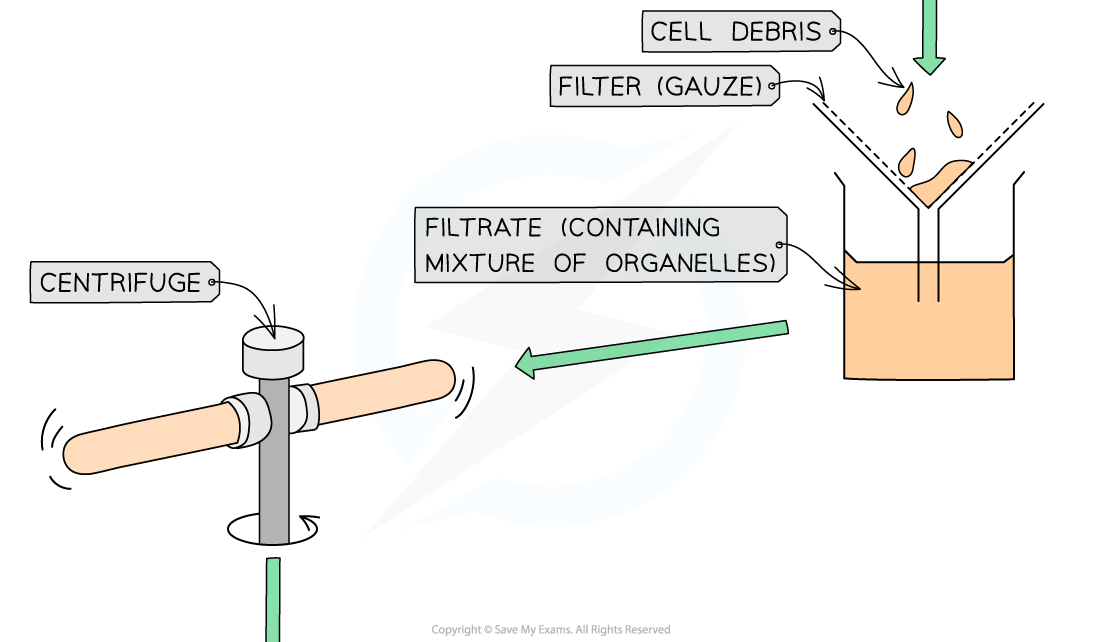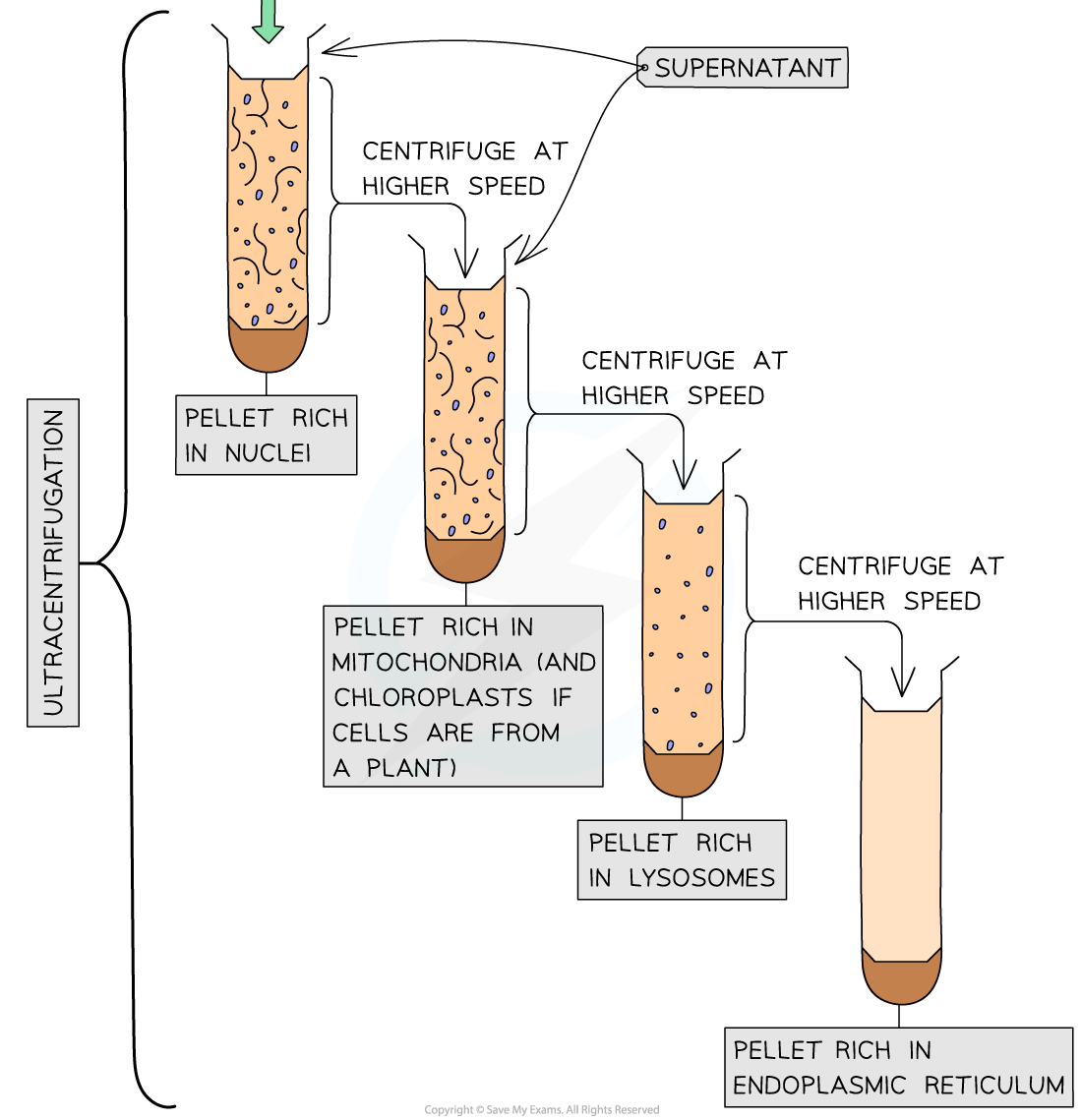Cell fractionation
1/10
Earn XP
Description and Tags
Name | Mastery | Learn | Test | Matching | Spaced |
|---|
No study sessions yet.
11 Terms
What is cell fractionation?
It is a process where cells are broken up and the different organelles they contain separated out.
What is organelle separation based on?
It is based on the size or the mass of the organelle using gravity.
What are the three stages in cell fractionation?
Homogenisation
Filtration
Ultracentrifugation
What must tissue be placed in before cell fractionation begins?
It is placed in a cold, isotonic and buffered solution.
Why is the solution cold?
Reduces the enzyme activity which may break down the organelles if not reduced.
Why is the solution isotonic?
Isotonic(same water potential as original tissue) solution helps to prevent organelles from bursting/shrinking due to osmotic gain/loss of water.
Why is the solution buffered?
Buffered solution maintains a constant pH.
How does homogenisation work?
Breaks/blends up the tissue to break open the cell membrane and releases the organelles.

How does filtration work?
The homogenate is filtered to remove large debris as these will be heavy and sink to the bottom of the test tube.

How does ultracentrifugation work?
The faster the spinning the greater the force, so at slower speeds larger fragments collect at bottom of tube forming a pellet. Smaller ones remain near the top and stay suspended in a liquid called supernatant. When re-spun at higher speeds the smaller organelles will collect at bottom forming a new pellet.

What is the order of organelle fractionation?
At the top is the nuclei, speed(speed x gravity) is around 1000 after 10 minutes. Next is chloroplasts and mitochondria with speed of 3500 after 10 minutes. After is lysosomes and endoplasmic reticulum with speed of 16500 after 20 minutes. Last is ribosomes with speed of 100,000 after 60 minutes.